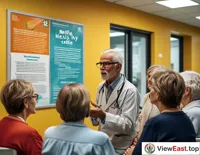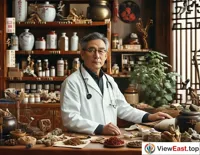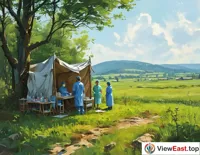







China's journey towards balanced allocation of medical resources is a long-standing battle concerning the health and well-being of hundreds of millions. From cities to villages, from the eastern coast to the western frontiers, China has made significant achievements in promoting urban-rural medical equity. This article will follow the timeline, narrating how China, through policy guidance, technological innovation, and cultural shaping, has achieved the balanced distribution of medical resources, ensuring quality medical services for every corner of the country.
1. The Historical Starting Point: The Challenge of Urban-Rural Gap
In the early stages of reform and opening up, China's medical resources were mainly concentrated in urban areas, with rural areas lagging behind in medical conditions. The urban-rural medical gap became a bottleneck restricting social development. With rapid economic growth, this issue became increasingly prominent, and the demand for urban-rural medical equity became more urgent.
2. The Spring Breeze of Policy: Advancing Medical Reform
Entering the 21st century, the Chinese government began to vigorously promote medical reform, issuing a series of policies aimed at narrowing the urban-rural medical gap. The implementation of policies such as the New Rural Cooperative Medical System, the essential drugs system, and the construction of primary health care service systems brought unprecedented medical security to rural areas.
3. The Wings of Technology: The Rise of Telemedicine
With the development of internet technology, telemedicine has become a bridge connecting urban and rural medical resources. Through remote consultations and online medical advice, urban medical resources can be extended to rural areas, greatly improving the level of medical services in rural regions.
4. Cultural Integration: Enhancing Health Awareness
In the process of promoting urban-rural medical equity, raising public health awareness is equally important. Through health education and public health promotion activities, China has gradually cultivated a healthy lifestyle for all, enhancing the awareness of disease prevention and reducing the demand for medical resources from the source.
5. Green Hope: The Revival of Traditional Chinese Medicine
As a treasure of Chinese traditional culture, Traditional Chinese Medicine (TCM) plays a unique role in urban-rural medical equity. By promoting TCM services, not only has it enriched the medical choices in rural areas but also injected new vitality into the inheritance and development of traditional medicine.
6. Future Outlook: Continuous Exploration and Innovation
Faced with new challenges such as an aging population and changes in the disease spectrum, China continues to explore and innovate on the path to urban-rural medical equity. From smart healthcare to the Healthy China initiative, China is embracing future challenges with a more open and innovative attitude.
Stories and Metaphors: The Dance of Balanced Medical Resources
Imagine medical resources as a grand ball, where urban and rural areas are dancers on the stage. In the past, urban dancers monopolized the stage, while rural dancers could only watch from the sidelines. Now, with the spring breeze of policy, the wings of technology, and cultural integration, urban and rural dancers are dancing hand in hand, performing a symphony of balance and harmony together.